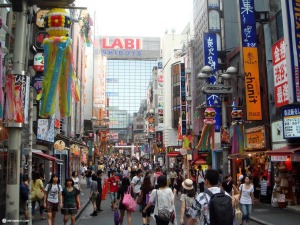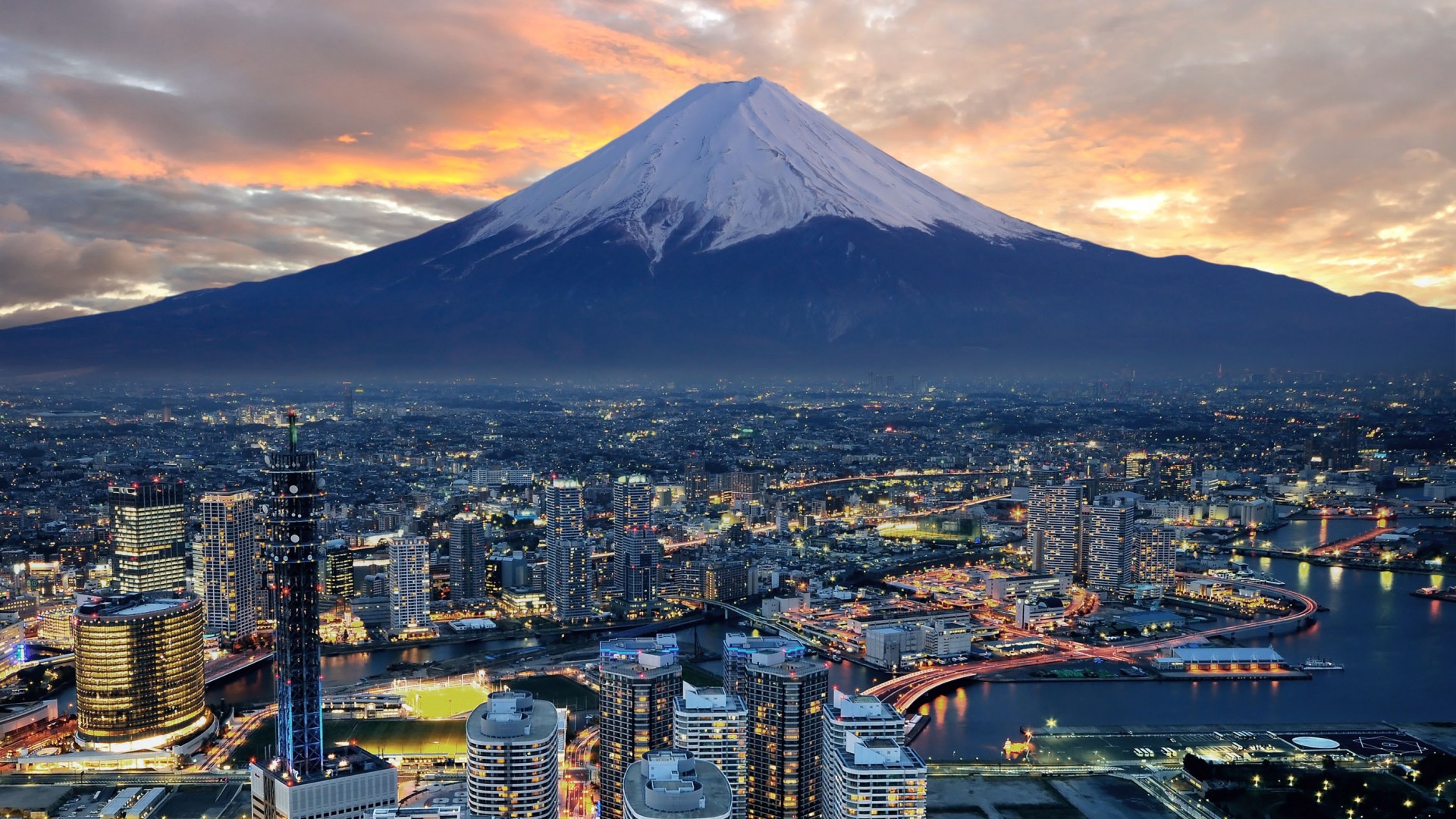Reducing obesity
 Reducing obesity: What Americans can learn from the Japanese
Reducing obesity: What Americans can learn from the Japanese
By Benjamin Senauer and Masahiko Gemma
Japan has one of the lower rates of obesity, although it is increasing as virtually everywhere, and the United States has one of the highest rates of obesity in the world. Only 3.6% of Japanese age 15 and over had a Body Mass Index (BMI) over 30 in 2002, which is the international standard and is determined by dividing a person’s weight in kilograms by their height in meters squared (Ministry of Health, Labor, and Welfare, Japan, 2002; WHO, 2006). In contrast, 32.0% of Americans age 20 and over were obese, and a total of 66% were either overweight (BMI over 25) or obese in 2003-04; some two-thirds of the adult population (NCHS, 2006). Because the distribution of body fat affects health risks and Asians tend to have more abdominal fat at lower BMI levels, the Japanese government uses a BMI over 25 to define obesity. For Japanese age 20 and over, the same age group as for the U.S., 25.6% had a BMI over 25, which is still lower than the U.S. rate. Much can be learned about how to reduce obesity in the United States if we can explain why the rate is so much lower in Japan.
Being obese and overweight is associated with an increased risk of many chronic disease and premature death, plus significant increases in health care costs (WHO, 2006). Viewed at its simplest, a person gains weight when their caloric intake exceeds the calories expended through basic metabolism and physical activity. The average person in Japan both eats less and is more physically active than the typical American.
Food consumption, prices, and dietary traditions
The average daily intake of Japanese over one year old was 1,930 calories in 2002, whereas Americans age 1-85 consumed 2,168 calories on average in 2001-02 (Ministry of Health, Labor, and Welfare, Japan, 2002; NCHS, 2006). The typical adult in Japan is smaller in stature than the average American, thus obviously needing fewer calories. However, this factor explains only a modest portion of the difference of over 200 daily calories. Moreover, the average daily fat consumption in japan was 54.5 grams, compared to 80.6 grams in the United States.
Food balance sheets, also referred to as food supply and utilization data, can be used to compare the per capita availability of calories back to 1960 in the two countries. The quantities of food available at retail are derived by applying conversion factors, which account for losses in processing and distribution, to the estimated supply of each agricultural commodity, such as potatoes. The nutrients across all food categories are aggregated to determine the nutrients available for consumption. The calories available rose only slightly in Japan between 1960 and 2003, from 2,291 to 2,558 (Ministry of Agriculture, Forestry, and Fisheries, Japan, 2005) Over the same period, the U.S. per capita availability of calories increased from 3,100 in 1960 to a rather astounding 3,900 in 2003 (ERS, USDA, 2006). While the increase from 1960 to 2003 was only 267 calories per capita in Japan, in the United States it was 800 calories per person. As expected, these figures are higher than actual caloric intake, which was provided in the previous paragraph. However, this data does suggest the sheer abundance of food, especially calorie dense food, Americans have available and, hence, are tempted by. A reflection of this is the “supersizing” of serving portions, with many Americans losing any sense of what a normal serving size should be.
Expenditures and Prices
As is obvious to anyone who visits Japan, food is considerably more expensive than in the United States. As a share of total consumer expenditures, the average Japanese household spent 23.2% on food in 2003, 19.6% for food consumed at home, and 3.6% for food away from home (Ministry of General Affairs, 2005). In comparison, the average American household devoted only 13.1% of their total expenditures to food, 7.7% for food at home and 5.4% for food away from home in 2003 (Bureau of Labor Statistics, 2005). Per capita income is almost as high in Japan as in the United States, so this difference cannot be explained simply by the decline in the budget share spent on food as incomes rise. The Japanese spent 84.5% of their total food expenditures for food at home, while Americans spent only 58.8%. Dietary content can be better controlled when preparing food at home than eating away from home.
A comparison of prices in 1999 found the overall price of food to be 49% higher in Tokyo than in New York City (Ministry of General Affairs, 1999) The authors made a simple comparison of prices in April 2006 in a grocery store in Tokyo and a supermarket in St. Paul, Minnesota. For a loaf of white bread , a carton of eggs, a pin of Haagen-Das ice cream, and five kilograms of medium quality rice, the Tokyo prices were more than double those in Minnesota. Japan has long been criticized for tis protectionist rice policy, which causes the domestic price to be far higher than the world market price of rice. The food supply chain is far less efficient in Japan,with more layers than in the United States, where intensive competition and information technology has substantially reduced distribution costs. However, given their high level of income, food prices have a limited effect on the Japanese level of caloric intake. A comparison of the relative prices of more healthy foods, such as fruits and vegetables, and other foods, such as fats and sugar, in the two countries would be an interesting topic, but is beyond the scope of this paper.
Dietary Traditions
The traditional diet in Japan is built around a base of rice and other grains, with plentiful consumption of vegetables and fruits, and also fish, but relatively little animal fat, meat and sweets. In Japan, the presentation of the food is very important, and particular attention is given to the colors and textures. There is an old Japanese saying, “we eat with our eyes.” Portions are much smaller at Japanese restaurants or in home-prepared meals than is typical in the United States. An elegant during experiencing might consist of dozens of small dishes, some no more than a few bites. The meal is meat to be beautiful, as well as delicious. Fruit is usually served at the end, rather than a rich dessert. Traditionally in eating, the Japanese have applied the concept of “enryo” (restraint) (Samuels, 2005) Although more Western foods are being eaten, traditional food customs are still quite strong in Japan.
On a recent visit to a daycare facility in Tokyo by the authors, the careful attention to the nutritional quality of the food provided was impressive. A sample lunch is placed under a glass cover for all the parents to see as they pick their children up at the end of the day. A newsletter provides the meal plan to the parents in advance and suggests foods to serve at home to nutritionally complement those provided at the daycare. In addition, unlike in most American schools, students are taught even at an early age to appreciate and respect food. The students must wash their hands before eating and are expected to use good table manners. They sit at a low tables with small chairs and are served their trays individually. Before eating, they thank the farmers who grew the food and those who prepared it.
Physical Activity and the Cost of Inactivity
Another explanation for the much lower rate of obesity is that the Japanese are more physically active than Americans. However, this is not because they go to the gym or engage in planned physical activities more than Americans. Only 29.7% of Japanese age 20 and older reported they engaged in regular physical exercise activities in 2002 (Ministry of Health, 2002). In 2003, 46.0% of Americans 18 and over said they engage in a moderate level of physical activity for 30 minutes or more at least five times per week, or a vigorous level for 20 minutes or more at least three times a week. (U.S. Census Bureau, 2006). However these figures may be inflated since they are self-reported.
Walking
The major difference is that Japanese walk much more in their daily lives than Americans. Walking is a simple, but effective form of exercise in which everyone except the disabled can engage. The average person in Japan, 15 years old and above, walked 7, 421 steps per day in 2002, about 3.3/4 miles at 2,000 steps per mile (Ministry of Health, 2002). Men walked an average of 7,573 steps and women 7,140. A recent nationally representative survey of Americans on walking by Harris Survey found that men walked an average of 5,940 steps and women 5,276 (Hill, 2006) Pedometers were provided to participants in both surveys that counted their steps. The average length of a step for the Japanese may be less than for the average American, who is taller, but only modestly so.
The Japanese walk an average of about 2,000 steps more per day than Americans, which burns about 100 additional calories (Shape Up America, 2006). The reason they walk more is they rely far less on automobiles and far more on mass transit to get around. The use of public transportation usually entails walking, since it does not take you from the door of your home to that of your workplace or other destination. Americans who commute to work in their cars or drive to go shopping may simply drive from their garage and then park only a few hundred feet or less from their workplace or the shopping mall, doing whatever they can to minimize any walking. Moreover, in crowded Japanese cities, the easiest way to get somewhere nearby is to simply walk.
Costs of Automobile Use and Public Transportation
There is an economic explanation underlying this disparity in walking between Japan and the United States. The cost of owning and operating an automobile is much higher in Japan, whereas the cost of using public transportation is lower. The Japanese co-author of this article owned a car when he lived in the states for several years, but he does not own one in Tokyo because it is too expensive.






